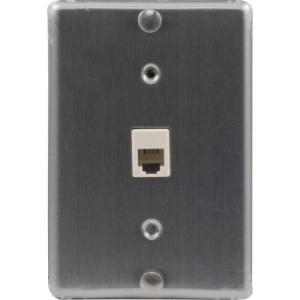
There was a time not too many decades ago when the telephone company and the cable company owned the wire inside of homes. I recall that sometime in the 80s the FCC gave ownership of inside telephone wire to homeowners, and they did the same for cable TV wiring in the mid-90s. Before that time builders did not typically put wires in new homes and the telcos and cable companies were expected to come and put the wire in at their cost. I recall that in some cases the telco or cable company would come and install wiring while a home was under construction, particularly in new subdivisions.
But after the FCC gave the wires to homeowners this all changed. The telco or cable company would still install wiring, but only after a customer asked for it, and typically by stringing the wires along baseboards, and usually for a fee. Since people wanted the wires hidden inside the walls, builders began offering wiring as an option. And over time this grew from option to an expectation. There was a twenty year period where a builder just routinely wired a home for telephone and cable and they generally put outlets all over a new home.
Back in the late 90s when cable modems and DSL became popular many builders started providing an option to wire homes with category 5 cables for broadband. And in upscale homes this soon became a standard feature.
What is interesting over the years was the assumption of how homes ought to be wired. For instance, in the old days Ma Bell assumed that a house wanted one telephone and would put it where it was requested. Those old phones didn’t have jacks and the phones were hard-wired into a big thick telephone cable. The cable company was similar and for many years they assumed homes needed one cable outlet, generally in the living room. If customers wanted more than that they had to pay for it.
At the other end of the spectrum, a home build in 2000 probably had phone jacks and cable outlets all over the house. The way that people used communications had changed a lot from the 60s and people wanted option on where to place phones and TVs.
Today we are moving back to seeing wiring as an option again. Less than 50% of homes in the US have telephones and builders don’t want to spend money for telephone wiring if it’s not needed, so homes are not automatically being wired for phone any longer. My home was built 4 years ago and it has one phone jack in the kitchen wall, and that jack is not even wired to a telephone cable. I guess it’s there to make it easier to put in phone if I want it.
In the data and TV worlds we’ve seen a big shift to using WiFi in the last few years. And that is making it obsolete to wire a home with category 5 cable because the day of hard-wiring computers is gone. We have three apple laptops in our house that don’t even have an RJ411 jack. And our one desktop connects wirelessly. Most homes are still wired with coaxial cable, although in looking online I can find builders who are now making this optional. My home is wired with coax, but we don’t use it.
Fiber overbuilders are now using category 6 wire because category 5 wire is not adequate for gigabit speeds. It’s interesting that almost no homes are wired today for gigabit capabilities. The ideal set-up for a home would be category 6 wiring to the primary WiFi router and then more category 6 wiring to the ends of the home allowing for easy installation of additional networked WiFi routers. I’ve written several blogs talking about how a single WiFi router is already inadequate for a large percentage of homes.
It’s probably going to take builders a while to catch onto this because carriers are just now figuring it out. I talked to the engineers at one of the mid-major cable companies who estimated that 20% of their customers wanted more capacity than can be supplied by a single WiFi router, and that problem is going to quickly mushroom. We are only a few years away from when the networked WiFi routers will become the standard, and, if done right ought to be able to handle our home bandwidth needs for decades to come. And in doing so, pre-wiring homes will become a thing of the past.